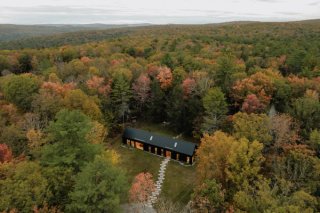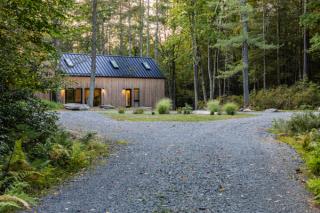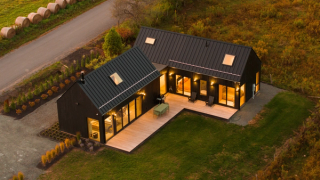The Second Home Arrival Sequence

At HUTS, we think of a second home as more than just another address. It’s a shift: a change in pace, sound, light…in how you spend your time and see yourself.
That transition starts long before you reach the front door. The moment you turn off the main road or catch the first glimpse of the roofline through the trees, you should feel like you’re turning up to somewhere very different than the place you came from. That’s what a good sense of arrival does. It signals that you’ve left your everyday life behind and entered a slower, quieter rhythm.

Getting that feeling right means balancing the emotional with the practical. Roads, driveways, and utility runs might sound purely functional, but they actually set the tone.
At HUTS, we use them as part of the story.
A curve in the driveway can build anticipation; a clearing can open to a view right when you need it. Even a parking area or path can be designed to create a small moment of pause. When infrastructure follows the land instead of fighting it, the experience feels natural, like the home grew out of the site instead of being placed on top of it.

A big part of that experience comes from contrast. A second home should feel different from your primary one. Maybe your apartment opens straight onto a sidewalk, but your weekend place asks you to walk a short path through tall grasses before you reach the door. Maybe there’s a gate, a bend, a pause. These small gestures create a sense of crossing over, from city mode to country mode, from busy to calm.

That first moment of arrival sets the tone for everything that follows. It’s the instant your shoulders drop and you start breathing differently.
For us, designing that feeling isn’t about ornament or grand entrances. It’s the subtle hints that convince owners and guests that they’ve arrived somewhere that matters. When we get it right, the home greets you before the door ever does.


